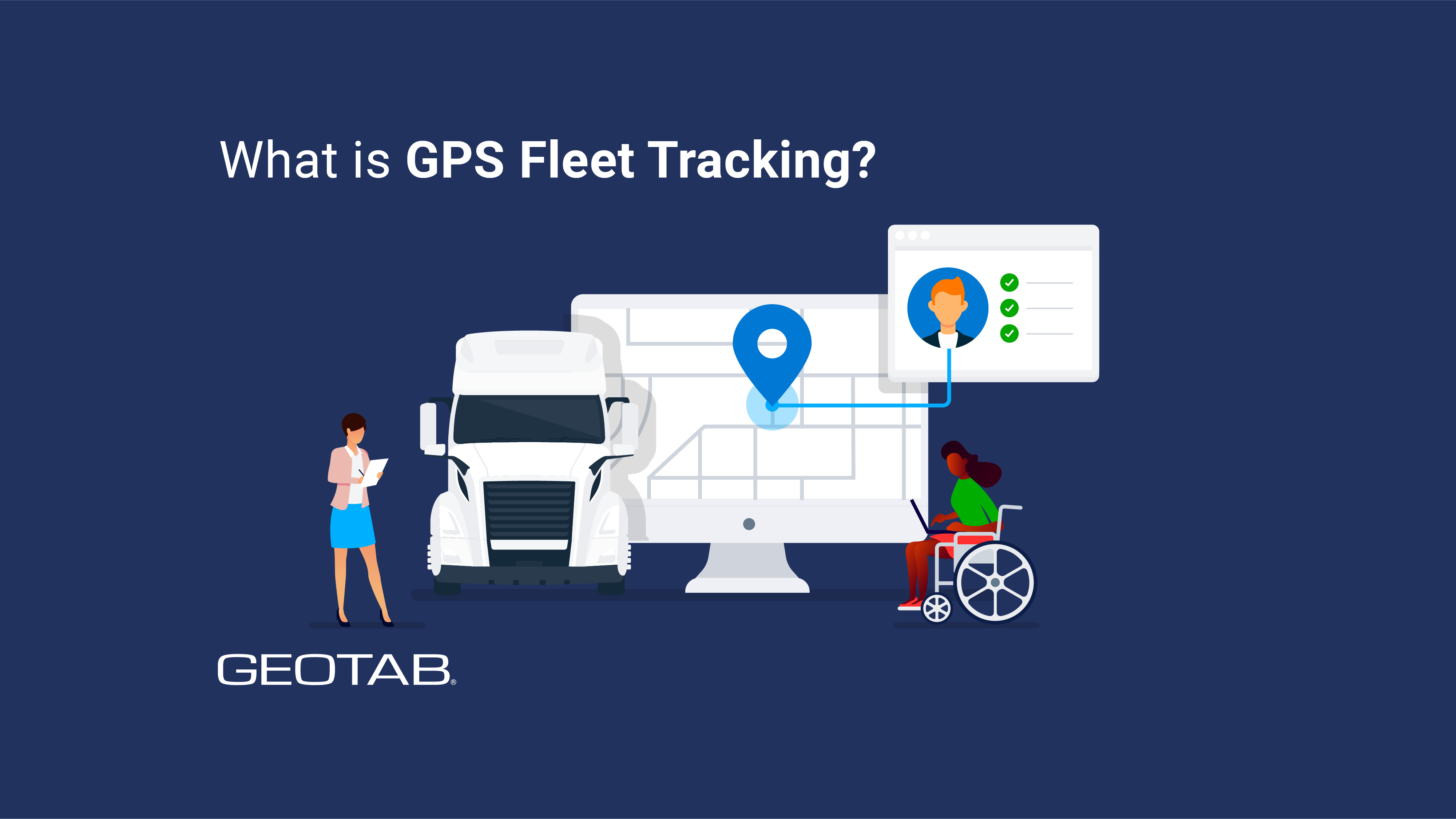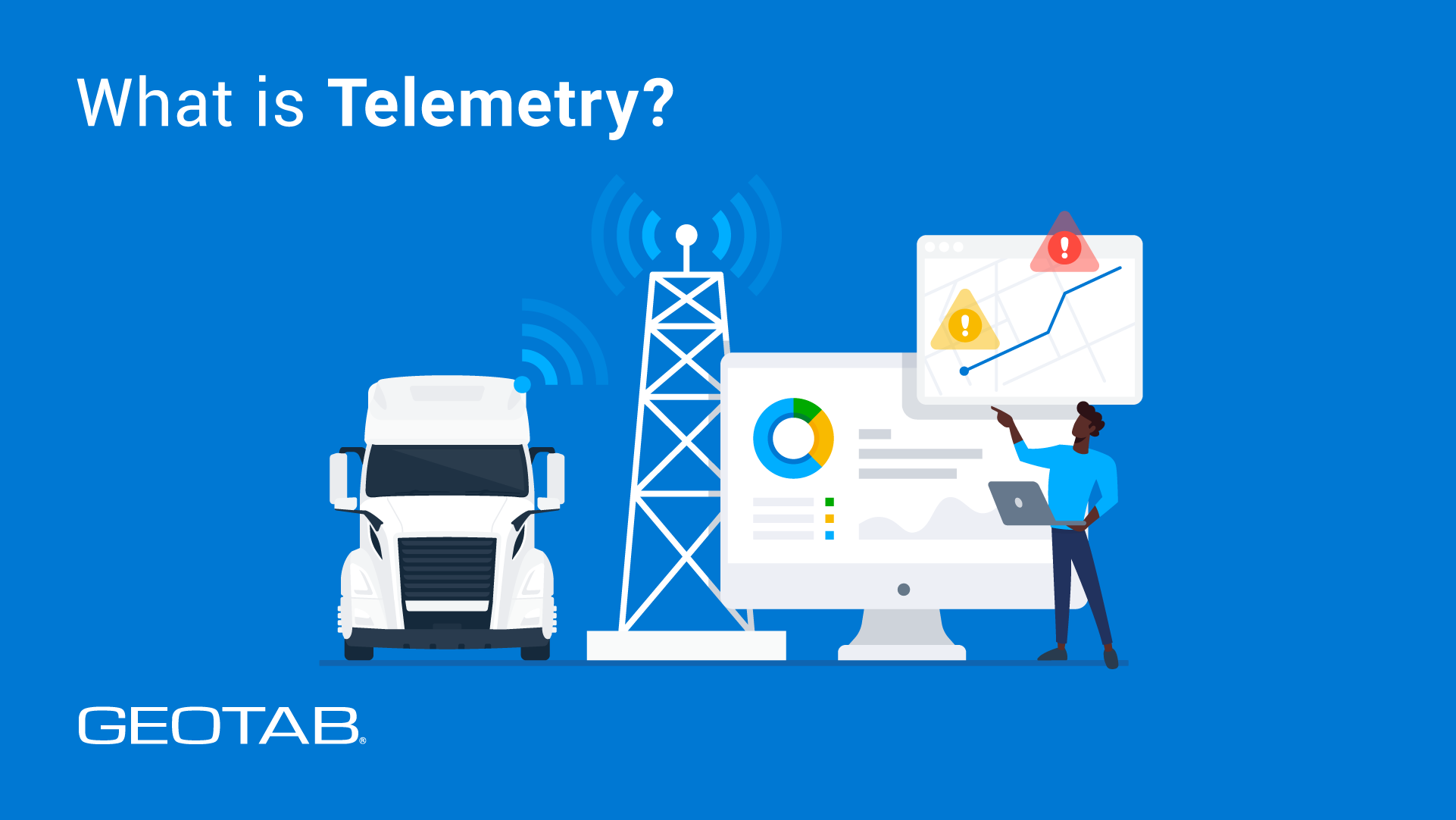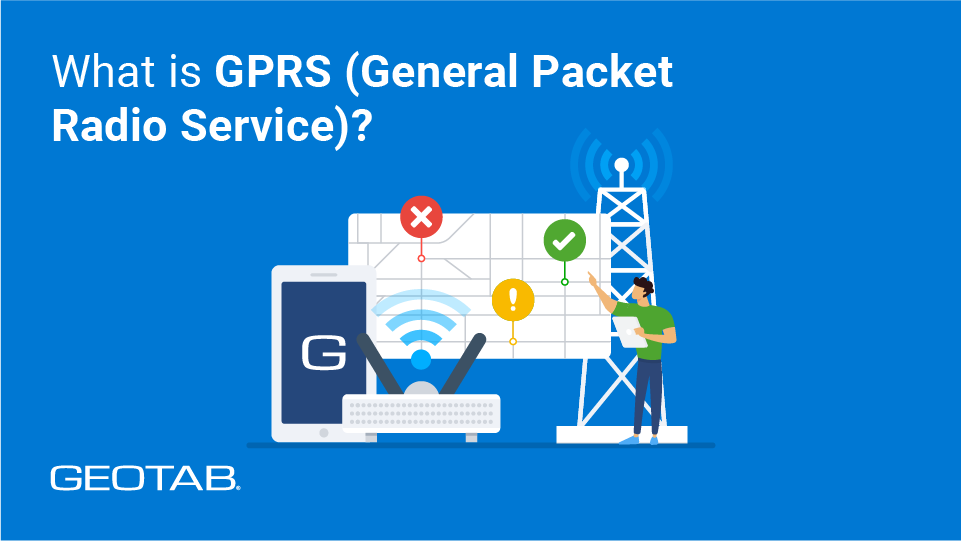What is GPS fleet tracking?
July 17, 2025
•4 minute read

Definition
- GPS fleet tracking is a technology that uses global positioning systems (GPS) to monitor the real-time location, movement and speed of fleet vehicles.
What is GPS fleet tracking?
GPS fleet tracking is a technology that uses global positioning systems (GPS) to monitor the real-time location, movement and speed of fleet vehicles ranging from trucks to heavy equipment like bulldozers and excavators. Fleet tracking is helpful for organizations that want to improve operational control, expedite routes, enhance driver safety and reduce overall costs. In this glossary blog post, you will learn how GPS fleet tracking works, the core technologies used in fleet tracking, how GPS tracking benefits fleets in different industries and other best practices.
How does fleet tracking work?
To show a fleet manager where any of their vehicles are, GPS fleet tracking systems use onboard vehicle devices to continuously collect data on each vehicle’s location and speed using satellite signals. This process is known as trilateration, where a GPS receiver calculates its position by measuring how long it takes for signals to travel from multiple satellites orbiting Earth.
The onboard telematics device in the vehicle then uses cellular networks to transmit this GPS information in real-time to a centralized platform where fleet managers can view, analyze and act upon the data. For example, GPS tracking can monitor how long a driver stays at a rest stop on a long haul trucking route to help a fleet manager ensure the driver is complying with mandatory rest breaks.
In addition, some tracking systems share more than just a vehicle’s location and movement. These more advanced systems can use accelerometers and other sensors to monitor driving behavior, fuel usage, vehicle component health and idling. By tracking all these different aspects of their vehicle fleets, fleet managers can better understand their operations in real-time to make more effective decisions.
Core technologies in fleet tracking
GPS technology
GPS (Global Positioning System) provides precise location data by triangulating signals from a network of satellites, comparing how long it takes for signals to travel from the receiver to each satellite. The GPS is the foundation of fleet tracking because it enables real-time monitoring of each vehicle across the world in remote locations, dense urban areas and everywhere in between.
Telematics systems
Telematics systems collect and transmit GPS and other data from vehicles using onboard diagnostics (OBD) and cellular connectivity. This data can include location, vehicle speed, engine performance, braking activity and more. By gathering all this data in a centralized platform, telematics helps fleet managers simplify their oversight of their vehicle fleet for more efficient operations.
Geofencing capabilities
Geofencing technology enables fleet managers to set virtual boundaries around specific geographic zones. These boundaries automatically notify fleet managers whenever a vehicle enters or exits these zones. This capability makes it much easier for fleet managers to identify unusual vehicle movements, helping to enhance security and reduce unauthorized vehicle use.
Benefits of fleet tracking solutions
By helping fleet managers better oversee their entire fleet operations, GPS fleet tracking offers a host of benefits including:
- Enhanced safety measures: If a collision occurs, GPS tracking enables fleet managers to find their vehicles right away and dispatch emergency assistance. This helps protect drivers and get damaged vehicles in for repairs quickly.
- Improved operational efficiency: By tracking where vehicles are at all times, fleet managers can optimize routes to avoid traffic and closed roads. GPS tracking can also show if a vehicle has been stationary longer than expected, helping managers reduce idling time and prevent delays.
- Cost savings and financial benefits: The improved vehicle visibility of GPS tracking helps fleet managers find the best routes to reduce fuel consumption and maintenance costs, and can also lower insurance premiums.
- Real-time location alerts: Fleet managers can receive up-to-the-minute updates on vehicle whereabouts, helping them respond faster to customer inquiries and safety incidents.
- Route planning innovations: By combining analysis from historical traffic data and live road conditions, fleet managers can plan faster and more efficient routes for their drivers to reduce fuel costs and complete deliveries faster.
- Driver behavior monitoring: GPS tracking can monitor driver behavior and alert fleet managers to excessive speeding, harsh braking, abrupt turns or rapid acceleration. This helps prevent collisions and promote safe driving. GPS tracking data can also show how long a vehicle stops to help prove compliance with FMCSA regulations like Hours of Service (HOS) rules.
Types of fleet tracking devices
GPS tracking devices are generally divided into active and passive trackers. Active GPS trackers continually transmit real-time location data to a centralized system so fleet managers can always monitor vehicle movement. Passive GPS trackers continually store vehicle movement data at designated intervals or when triggering events occur, such as a vehicle arriving at a location. Instead of transmitting continually, passive trackers generally require manual downloads when a vehicle returns home.
- Hardwired trackers: Permanently installed in vehicles and connected directly to a car’s battery, hardwired trackers provide a secure and reliable GPS connection. They have direct access to each vehicle’s diagnostics and are ideal for long-term monitoring of all kinds of data.
- OBD Devices: These tracking devices plug into the vehicle’s on-board diagnostics (OBD-II) port. This makes OBD trackers simple to install, providing quick access to various types of telematics data, and they can be easily moved between vehicles.
- Portable tracking systems: Battery-powered and compact, these transponder devices can be carried between vehicles to monitor the location of trailers, equipment or temporary vehicles that may not support permanent installations.
Industry-specific GPS fleet tracking applications
GPS tracking offers greater operational visibility to fleet managers in any industry, but is especially useful for the transportation, construction and public safety sectors.
Transportation sector
For logistics and delivery operations, GPS fleet tracking helps ensure on-time deliveries by verifying the most efficient routes and reducing delays and unauthorized vehicle use. According to the American Transportation Research Institute, improved routing can reduce fleet fuel costs by up to 20%.
Construction industry
Construction fleets benefit from GPS tracking by monitoring how drivers operate heavy equipment to promote safe driving and reduce idling. Geofencing is especially useful for construction managers to identify suspicious vehicle movement and help prevent theft. By providing real-time visibility into asset locations, GPS tracking also helps construction managers improve dispatch efficiency and coordination between job sites.
Public safety services
Emergency responders rely on fleet tracking to know where vehicles are at all times, helping ensure the fastest possible response times across a wide geographic location. GPS-enabled dispatch systems help responders find the nearest unit to send to an incident, improving outcomes and operational transparency.
Data analytics in fleet tracking
Beyond showing fleet managers where their vehicles are at all times, GPS tracking data is also invaluable for using data analytics to efficiently manage fleet operations. Two of the most important applications are improving fleet-wide decision-making and integrating with other business systems.
Actionable insights for decision making
Fleet tracking platforms analyze historical and real-time GPS data from every vehicle in a fleet. By combining this data with other telematics data, these platforms support decisions on routing, staffing, fuel use, maintenance and more. Dashboards and automated reports can highlight inefficiencies, helping fleet managers make data-driven adjustments that improve performance.
Integration with existing systems
Many GPS tracking solutions integrate with other business systems like enterprise resource planning (ERP), transportation management systems (TMS) and maintenance platforms. By centralizing all this data in one environment, a company can visualize trends across its entire operation to reduce administrative overhead, find new efficiencies and streamlined compliance reporting.
Frequently Asked Questions
Fleet tracking is a system that uses GPS technology to monitor the location and activity of vehicles like trucks, vans, construction equipment and other assets in a fleet. This technology helps businesses manage their vehicle fleets more efficiently by providing real-time data on vehicle locations, speed and other operational details.
The cost of GPS fleet tracking varies based on provider, features and scale. Most providers charge a monthly fee per vehicle, typically ranging from $15 to $35 per vehicle per month. Initial hardware costs can vary from $50 to $300 per device, depending on whether the tracker is hardwired, OBD-based or portable. However, these costs are often offset by finding efficiencies in fleet fuel spend, improved maintenance scheduling and decreased insurance premiums. This makes GPS fleet tracking a high-ROI investment.
Other Stories

What is telemetry? How it works and why fleets need it
December 24, 2025
4 minute read

What is a CAN Bus? How it impacts fleet management
December 1, 2025
6 minute read

August 5, 2025
5 minute read